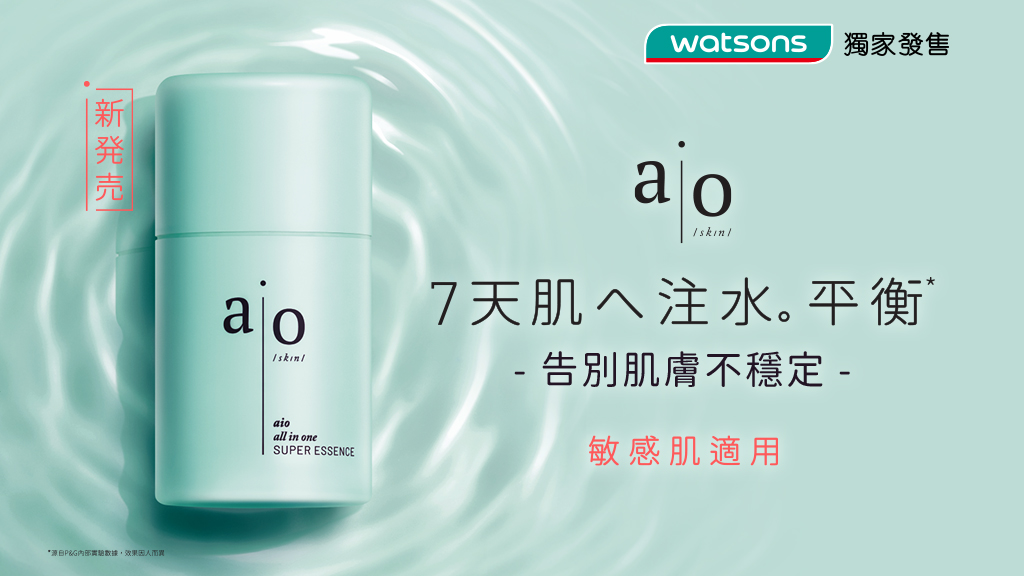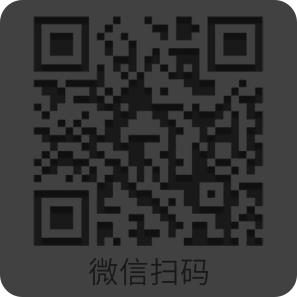- 2021-12-31
- 阅读量:6548
- 来源| Cosmetic Business Online
- 作者|
A consumer goods giant that is constantly expanding its brand matrix, and a leading retailer that is eager to realize retail innovation have reached cooperation for the first time for R&D and promotion of a new brand.
Recently, P&G and Watsons have jointly developed and launched a new skincare brand - "aio".
This is the first time that P&G collaborated with a retail partner to create a new skincare brand, and it is also one of the examples of Watsons innovative "O+O (Online + Offline)" retail model.

01
Focusing More on Clean Beauty
Watsons Launches the First Super Essence
According to the official introduction by Watsons, aio is a skincare brand that focuses on simple life and pursues exquisite and simple skincare solutions and life concepts.
Ni Wenling, CEO of Watsons Group (Asia and Europe) and Chief Operating Officer of the Group, defines aio as a Clean Beauty brand.
When searching Watsons WeChat applet and its official flagship store on Tmall, the CBO reporter noticed that Watsons had launched the aio All in One Super Essence online at the official price of RMB 390/50g and at the discounted membership price of RMB 299 on Watsons applet forthe Double 12 shopping event.

According to the information released on aio’s Xiaohongshu official account, the Super Essence has been specially developed by Japanese dermatologists who have served SK-II, a high-end brand of P&G for many years. The Super Essence has green tea jelly like texture and it offers the pleasant fragrance of Kyoto wood. It features unique tripe stability- maintaining Oxyniacine™ formula, it is supplemented with tropaeolum majus, niacinamide and vitamin E. According to the advertisement, the product is suitable for sensitive skin, and it has nourishing benefits such as improving oil-water balance, maintaining skin barrier and boosting skin vibrancy, etc.
According to the CBO reporter's inquiry at the National Medical Products Administration, the earliest filing date of aio All-in-One Super Essence is December 4, 2020, and the original country of production is Japan. The product is currently produced by Guangzhou Procter & Gamble Co., Ltd.
Meanwhile, the brand has been launched on social platforms such as Xiaohongshu and Weibo. With “aio” related keywords search on Xiaohongshu, there are close to 1000 notes from KOLs and KOCs.

02
P&G Needs to Withstand Cost Pressure
Madly Expanding Its Brand Pool and Adding More to Skincare Category
Markus Strobel, President of P&G Global Skin and Personal Care, said that the birth of aio was the first breakthrough collaboration between P&G and a retail partner in the beauty sector. The President revealed that aio will mainly attract the young people of the generation Z and millennial generation. At the same time, in order to keep pace with the current upsurge of the sustainable development of the beauty sector, aio has also introduced its first fully recyclable packaging design.
In the recent years, P&G has been adding more to skincare categories through acquisition and incubation. It is obvious that both P&G and Watsons are ready to cooperate in the Clean Beauty field.
First, there is the consideration of cost. Since the beginning of fiscal year 2021 (July 1, 2020 to June 30, 2021), P&G has increased its after-tax extra cost by USD 600 million (about RMB 3.8 billion) due to the rising cost of bulk commodities and freight charges, and many brands of P&G have successively increased their prices, thus posing a challenge to the Group's costs and operating environment.
Cooperation with the retail giant Watsons has undoubtedly reduced some of the channel fees for P&G. At the same time, the online and offline exposure provided by Watsons has also helped P&G save its marketing expenses and reduced the trial-and-error cost for incubation of new products.
Second, this is a great attempt of P&G to add more to ts brand matrix, especially in the focus of the skincare product category.Currently, the two main brands of P&G skincare products are SK-II and OLAY.In recent years P&G has launched frequent acquisitions for new emerging brands and incubation of its own brands.
In July 2018 P&G acquired the skin repair brand First Aid Beauty (FAB). In 2019 P&G acquired Snowberry, a pioneer Clean Beauty brand based in New Zealand. 2021 P&G accelerated its pace of acquisition and incubation. 2021 P&G launched a new vegan brand DermaGeek.In November P&G acquired Farmacy Beauty, an independent skincare brand. In December P&G announced the acquisition of OUAI, a US-based high-end hair care brand.

It can be seen that there is something in common in all these brands: P&G tends to seek for brands that differentiate and complement the two brands that it owns, namely, SK-II and OLAY. Without exception, all these new emerging brands are more social media-based, younger and newer.
03
Watsons Gets Back on Its Feet in the Post-Pandemic Era
Transitioning from a “Sales Shelf” to an “Incubator”
Offline retailing has ushered in great changes after the pandemic. For Watsons, how to attract and retain more customers despite the decline in its traffic, and how to get out of the embarrassing situation of being just a "sales shelf" and strengthen its brand value and irreplaceability have become its top priorities.
The past few years have been quite difficult for Watsons.
As far as the store itself is concerned: BA marketing approach has resulted in complaints from consumers. Watsons, who was the first to popularize the self-owned concepts in the domestic beauty retail industry, also found itself embarrassingly constrained by the too-large proportion of its own brands in the later period, and was criticized for its old-fashioned product structure. Then Watsons failed to capture the opportunities of make-up and fragrance. Even though Watsons has been continuously upgrading its stores in the past five years, there is still a long way to go.
As far as external competition is concerned, Sephora, which focuses on high-end products, has started off with a bang and new local dark-horse retailers led by The Colorist, Wow Colour and HARMAY have sprung up like mushrooms. Watsons is not merely facing competitors from online channels.
Despite various challenges, Watsons "dominance" remains.
In August Watsons parent company CK Hutchison Holdings Limited released the performance for the first half of 2021, showing that the sales of Watson Group reached HKD 82.621 billion (about RMB 68.675 billion) in the first half of 2021, up 12% year over year. Specifically, the sales in the Chinese market was HKD 11.599 billion (about RMB 9.641 billion), up 32% year on year, which was its highest growth rate in five years.
In terms of the number of stores, Watsons Group operated 16,206 stores in 27 markets around the world in the first half of the year, an increase of 39 stores compared with that at the end of last year. Nineteen of these stores were set up in China. In the first half of the year the number of Watsons stores in China reached 4,134.

What is Watsons secret weapon? The most important factor is that its digital and young people-oriented transformation that has lasted several years has begun to pay off, enabling Watsons to say goodbye to its previous O2O(Online To Offline) single mode by connecting online and offline and using O+O (Online + Offline) to serve brands and consumers.
At the same time, Watsons is seeking the "exclusive" endorsement of major brands to become the first offline channel for their new products to make their way into China. For example, in May 2019 “dprogram” of Shiseido Group chose Watsons as its first stores to sell their product in China. In December2020 CUBE ME, an Inner Beauty brand that Amore Pacific launched two years earlier, also chose Watsons as the first stop to enter China's offline channels.
In addition, in the high-end sector Marionnaud Paris, a high-end fragrance and beauty store owned by Watsons Group, finally made its way into China. Marionnaud Paris opened its first time-limited store in Shanghai in September 2020, and its first store with an area 600 square meters in Wuhan in December the same year. A well-known high-end cosmetics retail giant based in France, Marionnaud is a household name in Europe, and was acquired by Watsons Group in 2005.

Recently, Watsons Group opened Marionnaud x Watsons concept stores in Shanghai and Wuhan that sell high-end beauty products such as make-up and fragrance.
But this is not enough. Watsons, who has been operating self-owned brands for a long time, may have realized that there is a big difference between "brand" mentality and "selling" mentality. Instead of trying to do everything themselves, Watsons believes that it is better to let professionals do professional work. aio is the best example – Watsons cooperates with P&G for R&D and marketing, and both sides independently can utilize their own advantages.
At the same time Watsons, which owns both platforms and data, has been an incubator of new emerging brands for years,building typical cases such as "creating the O+O marketing matrix for Herborist Diancui series" and "strengthening Winona's offline experience". Besides, Watsons even built a new emerging brand creation camp "Quqi Pavilion", which not only invites high-quality start-up brands hatched by Unilever's "United U Creation" to join in, but also successfully discovered and helped many new emerging brands to be popular, such as men's grooming brand "Guan Er Ge" and make-up trendy brand "Yan Shi Yin".
Interestingly, Watsons is not the only incubator. Its competitor Sephora has been a brand incubator for seven years. Notably, Sephora recently announced the 10 brands in its 2022 brand acceleration incubator program, which cover categories such as skincare, make-up, fragrance and toiletries.










